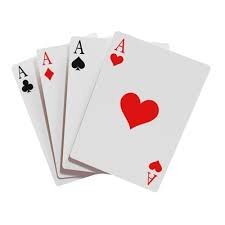Have you ever wondered how many hearts beat within a standard deck of cards? Understanding this seemingly simple fact is surprisingly crucial for mastering various card games. In this guide, we’ll uncover the number of hearts in a deck, explore their significance in gameplay, and delve into the fascinating world of playing cards.
So, how many hearts are in a standard deck? The answer is 13. But there’s much more to discover! We’ll take a closer look at each card in the heart suit, examine their values and rankings, and explore the rich history and symbolism behind these iconic playing cards.
Why Knowing the Number of Hearts Matters: From Odds to Outsmarting Opponents
In the realm of card games, knowledge is power. Knowing there are 13 hearts in a deck empowers you to calculate probabilities and make informed decisions. Whether you’re playing poker, blackjack, or bridge, understanding the distribution of cards within suits is crucial for strategic play. how many cards in a deck
For instance, in poker, knowing the number of hearts remaining in the deck can help you assess the likelihood of completing a flush or straight flush. In blackjack, it can guide your decisions on whether to hit or stand based on the dealer’s upcard. The more you understand the composition of the deck, the better equipped you’ll be to outsmart your opponents and increase your chances of winning.
The 4 Suits in a Standard Deck: A Tapestry of Symbols and History
A standard deck of 52 cards is divided into four suits: hearts, diamonds, clubs, and spades. Each suit carries its own unique symbolism and historical significance.
- Hearts: Represent love, emotion, and relationships.
- Diamonds: Symbolize wealth, fortune, and material possessions.
- Clubs: Associated with knowledge, power, and ambition.
- Spades: Often linked to death, misfortune, and bad luck.
The origins of these suits can be traced back centuries, with various cultures and traditions contributing to their symbolism and design. Exploring the history of playing cards reveals fascinating stories and insights into the evolution of these iconic symbols.
Deep Dive into Hearts: Unveiling the Royal Court and Numeric Values
The heart suit comprises 13 cards, each with its own value and ranking:
- Ace (can be high or low)
- 2, 3, 4, 5, 6, 7, 8, 9, 10
- Jack, Queen, King (face cards)
The ace of hearts holds a special position, often serving as the highest-ranking card in many games. However, in some variations, it can also be used as the lowest-ranking card, depending on the game’s rules.
The face cards – Jack, Queen, and King – add a touch of personality and narrative to the deck, often representing historical figures or mythological characters. Each card’s unique design and symbolism contribute to the rich tapestry of the heart suit.

Interesting Facts and Trivia About Playing Cards: A World of Wonder and Whimsy
The history of playing cards is a captivating journey through time and cultures. From their origins in ancient China to their widespread popularity in Europe and beyond, playing cards have evolved and adapted over centuries.
They have served as a source of entertainment, a tool for gambling, a medium for divination, and even a form of art. The intricate designs and diverse imagery found on playing cards reflect the creativity and cultural values of different eras and regions.
Here are some fun facts and trivia about playing cards:
- The world’s oldest complete deck of cards dates back to the 15th century.
- The four suits are believed to represent the four seasons, the four elements, or the four social classes.
- The Joker was introduced in the mid-19th century for the American game of Euchre.
- The world record for the tallest house of cards is over 25 feet high!
Conclusion: The Heart of the Matter
A standard deck of cards contains 13 hearts, each with its own unique value and symbolism. Understanding the number of hearts and their role in card games can significantly enhance your strategic thinking and gameplay.
But beyond their practical applications, playing cards hold a rich history and cultural significance. They offer a glimpse into the past, reflect our shared human experiences, and continue to provide endless hours of entertainment and enjoyment.
So, the next time you shuffle a deck of cards, take a moment to appreciate the intricate design and fascinating history behind each heart. And remember, whether you’re a seasoned card shark or a casual player, knowing the number of hearts in a deck is a valuable asset in your quest for card game mastery.

